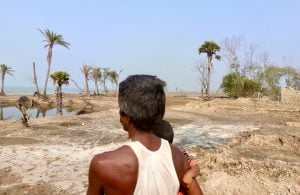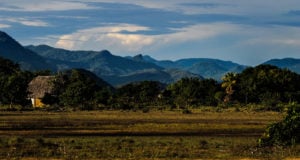Two years ago, at an event with journalists from different places, a Tromso based journalist made a striking observation. It is not we, living in the Arctic Circle, that cause climate change, but we pay the price, he said, as our environment is destroyed. Indians, too, pay a great price. According to one study, the Indian government spent over USD 90 billion coping with the losses brought on by climate change in the financial year 2013-14. The costs have only escalated. The NGO Germanwatch estimated that direct damage due to extreme weather events led to damages of USD 21 billion for India, approximately 1% of India’s GDP, equivalent to what the state spends on healthcare.
This is a huge price to pay for as poor country, which has historically contributed little to carbon emissions. In per capita terms Indians still emit far less carbon than any developed country, especially the poor farmers who are displaced, whose harvests are destroyed by unseasonal rains or by droughts brought exacerbated by climate change.
I do not wish to engage in a competition of tragedies – the pain of one set of people is not offset by that of others – but merely to illustrate that in thinking of our problems, we tend to do so in silos. Just as few Indians spend much time thinking about the melting Arctic, I would be surprised to see editorials in Arctic countries lamenting the destruction of rain-fed agriculture by climate change which impacts hundreds of millions of poor Indians. One of my political science professors once said, “In politics we write about what troubles us, our problems”. We talk about things we care about, people we care about, and this means that all politics tends to be local, and the journalism that covers it follows that lead.
At The Third Pole I know this very well. Our publication was set up to support unbiased, informed journalism from the Himalayan region, a region divided by the borders between Afghanistan, Pakistan, India, China, Nepal, Bhutan, Bangladesh and Myanmar. All these countries are critically dependent on the river basins of the Indus, Ganga, Brahmaputra and the Mekong, which they share. These rivers, themselves, are dependent on the glaciers of the Himalayas – the largest concentration of ice after the two polar regions (thus our name) – which are being massively impacted by climate change. (The Yellow and Yangtze rivers are also affected by these, but are not shared rivers.)
Stories of tragedies in one country often go unreported in another, despite the fact that they are part and parcel of the same problem, and will require the cooperation of all the countries to deal with them. I was struck by how the Arctic countries have been able to create a nexus of both science and policy, and been able to create a hub like the Arctic Frontiers where these are regularly discussed. The Himalayan region currently lacks any such forum, although there are organisations, such as the International Centre for Integrated Mountain Development, that bring together science and policy in the region.
India-Norway cooperation
More important than merely learning from an example is how we can cooperate with each other. I recently moderated a discussion between Norwegian and Indian scientists and policymakers at the Indian National Centre for Polar and Oceanic Research. It would surprise many people to know how closely the two countries have worked on research projects since the 1980s, in both the Arctic and Antarctica. This research is driven by the needs of both countries, as well as their specific capabilities. As science has advanced we have also learned how the monsoons, critical to agriculture in South Asia, are affected by, and affect the Arctic.
This is interesting, scientifically speaking, but maybe of greater interest is whether countries like Norway and India can figure out ways to cooperate with each other to deal with the crisis that climate change has brought to our homes. The recent UN climate summit in Poland seemed to indicate that there was a deep disconnect between developed countries and developing countries. While developed countries seem keen to avoid blame for historical levels of pollution, developing countries are wary of solutions that stop their economic development while hundreds of millions people live in poverty. As a result innovative solutions and new technologies are being hampered, and developing countries are sticking to old, polluting technologies that are only exacerbating the problem.
We need examples of leadership from both developed and developing countries to break this logjam. Sticking to protecting the rights of people within borders, while the problems erode the well-being of people across all borders, is not a winning strategy for anyone. If I see hope, it is in countries like Norway and India, who have a history of technical and scientific cooperation – and the trust that this has built – setting an example. The recent visit of the Norwegian Prime Minister to India highlighted some of these possibilities. Journalists will have to highlight such issues, works of hope. And maybe at another session, in the future, journalists from Delhi and Tromso can sit together to talk of how we were able to overcome some of these challenges together, rather than how we suffered them alone.
This piece was published in the Norwegian newspaper Nordlys.
![<p>As the Arctic ice continues to melt, we must approach the challenge with some hope [image by: NASA/Kathryn Hansen]</p>](https://dialogue.earth/content/uploads/2017/04/Arctic-ice-NASA.jpg)




![Arctic frontiers emerging leaders programme: The group of Arctic leaders at Tromso, Norway, with Jadhav 5th from right, first row [image by: Pål Brekke]](https://dialogue.earth/content/uploads/2019/01/50408647_10156965855024715_8346070978907865088_o-300x178.jpg)


![Trucks queing up in Timure, three kilometres from Nepal Tibet border to get clearance from Nepal's security force [image by Nabin Baral]](https://dialogue.earth/content/uploads/2017/07/Nepal6-300x200.jpg)
